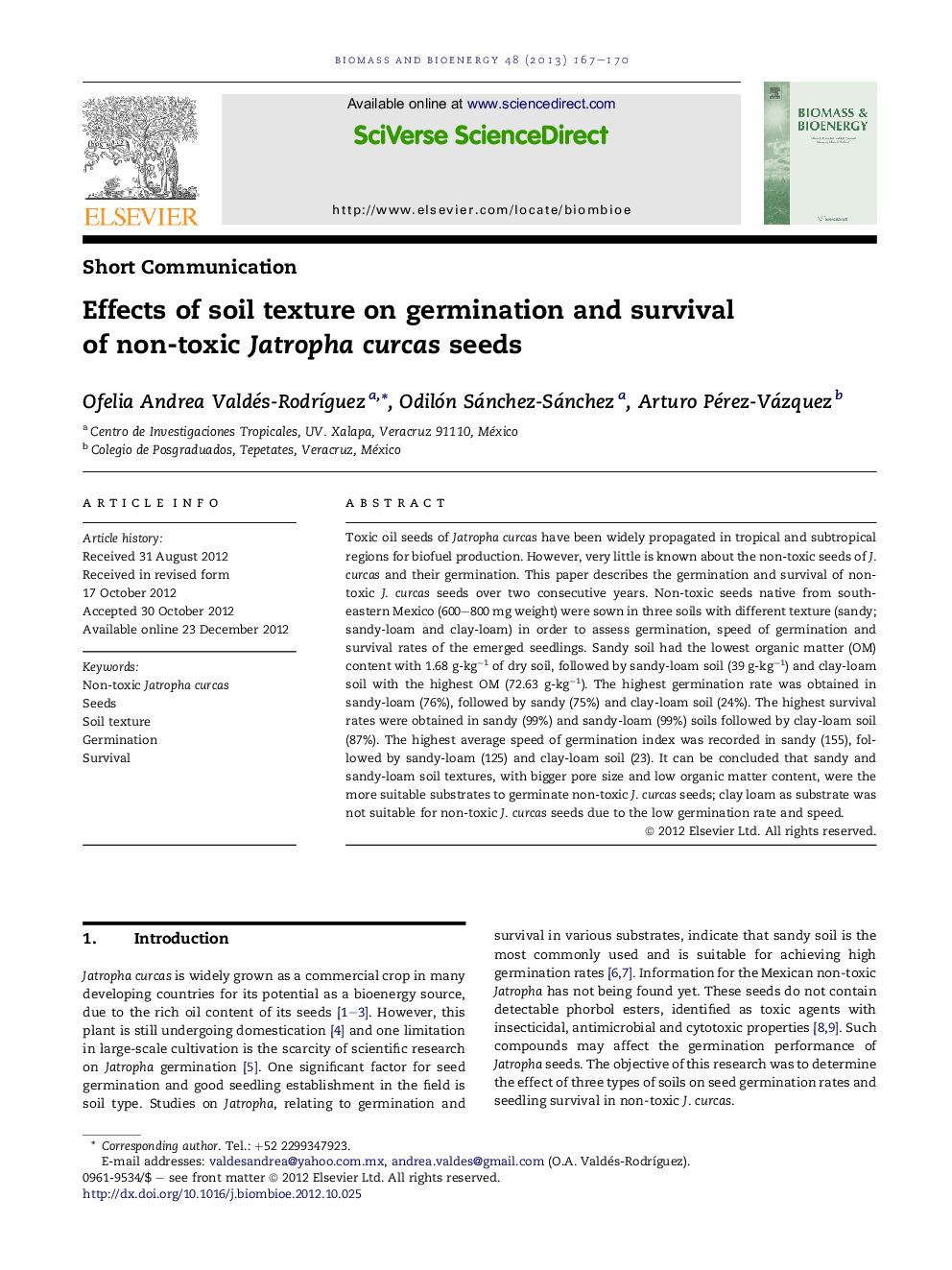| Article ID | Journal | Published Year | Pages | File Type |
|---|---|---|---|---|
| 677399 | Biomass and Bioenergy | 2013 | 4 Pages |
Toxic oil seeds of Jatropha curcas have been widely propagated in tropical and subtropical regions for biofuel production. However, very little is known about the non-toxic seeds of J. curcas and their germination. This paper describes the germination and survival of non-toxic J. curcas seeds over two consecutive years. Non-toxic seeds native from southeastern Mexico (600–800 mg weight) were sown in three soils with different texture (sandy; sandy-loam and clay-loam) in order to assess germination, speed of germination and survival rates of the emerged seedlings. Sandy soil had the lowest organic matter (OM) content with 1.68 g-kg−1 of dry soil, followed by sandy-loam soil (39 g-kg−1) and clay-loam soil with the highest OM (72.63 g-kg−1). The highest germination rate was obtained in sandy-loam (76%), followed by sandy (75%) and clay-loam soil (24%). The highest survival rates were obtained in sandy (99%) and sandy-loam (99%) soils followed by clay-loam soil (87%). The highest average speed of germination index was recorded in sandy (155), followed by sandy-loam (125) and clay-loam soil (23). It can be concluded that sandy and sandy-loam soil textures, with bigger pore size and low organic matter content, were the more suitable substrates to germinate non-toxic J. curcas seeds; clay loam as substrate was not suitable for non-toxic J. curcas seeds due to the low germination rate and speed.
► Non-toxic Jatropha curcas seeds were germinated in three different soils. ► Sandy, sandy-loam and clay-loam textures were used. ► Seeds in sandy soil had the highest germination speed. ► Sandy and sandy-loam soils had the highest germination and survival rates. ► Clay-loam soil had the lowest germination, speed and survival rates.
